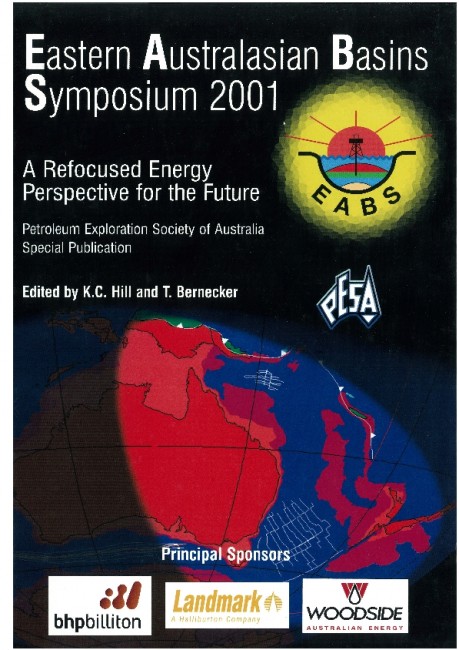Publication Name: Eastern Australian Basins Symposium 2001
Authors: B.J. Brown, R.D. M?ller and H.I.M. Struckmeyer
Date Published: November 2001
Number of Pages: 30
Reference Type: Magazine Article
Abstract:
The southern Australian margin is unique as it is the only known passive margin that formed over and orthogonal to a Mesozoic subducted slab in the mantle. The tectonic subsidence pattern observed along the southern Australian margin primarily reflects the extensional processes that were associated with the development of the divergent continental margins of Australia and Antarctica, coupled with Cretaceous mantle dynamics andthe influence of intra-plate stress on the Australian plate in the Late Tertiary.
The influence of the subducting slab on surface elevation is called dynamic topography. The dynamic topography hypothesis is tested by tracking southern margin topography as it moved over a sinking subducted oceanic slab. Negative dynamic topography from approximately 120-90 Ma was caused by the eastward motion of the Great Australian Bight (GAB) region over a sinking slab of the Pacific Plate in the mantle, enhancing initial subsidence. Subsequent lithospheric rebound coincides with post-rift thermal subsidence, and may have reduced it by up to 100-200 min the early post-rift phase, qualitatively in agreement with some wells. However, not all wells show the effect of reduced initial thermal subsidence, as expected. We use the differential stretching model pioneered by Royden and Keen (1980) as an alternative to account for the unexpectedly slow post-rift subsidence. We find that the initial post-rift subsidence is delayed only when the lithospheric mantle is stretched substantially more than the crust. However, this would be inconsistent with the small ~-stretching factors from strain-rate inversion of wells on the inner shelf, where all exploration wells are located. We conclude that dynamic topography is the most likelymechanism for the observed subsidence anomalies. The sinking slab under the evolving GAB may have resulted in a negative mantle temperature anomaly of up to 50?C, but the equivalent reduction in post-rift heatflow is strongly dependent on the lithospheric stretching factor B.


